

Partner Rosalie Sully, Matilda Hays, Emma Stebbins
Queer Places:
327 Main St, Boston, MA 02129
Omni Parker House, 60 School St, Boston, MA
02108, Stati Uniti
Via del Corso, 28, 00187 Roma RM
Via Gregoriana, 38, 00187 Roma RM
1 Bolton Row (Curzon St & Fitzmaurice Pl, Mayfair, London W1J 8QD, UK
)
49 Catherine St, Newport, RI 02840
Mount Auburn Cemetery, 580 Mt Auburn St, Cambridge, MA
02138, Stati Uniti
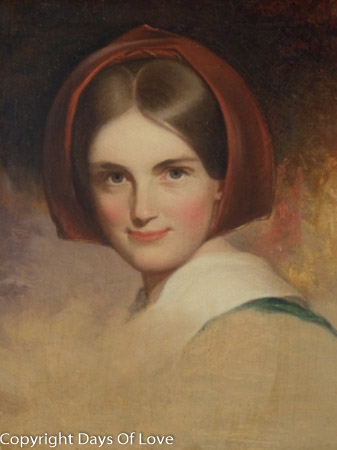 Charlotte Saunders Cushman (July 23, 1816 – February 18, 1876) was
an American stage actress.[1] Her voice was noted for its full contralto
register, and she was able to play both male and female parts. The heroine
Bianca Pazzi (a talented actress) of
Geraldine Jewsbury's novel,
The Half-Sisters (1848), is modelled on Charlotte Cushman. William Wetmore
Story, writing to his Boston friend, poet James Russell Lowell, observed
that
Charlotte Cushman,
Harriet Hosmer,
Matilda Hays, and writer
Grace Greenwood formed
"a Harem (Scarem) of emancipated females".
Charlotte Saunders Cushman (July 23, 1816 – February 18, 1876) was
an American stage actress.[1] Her voice was noted for its full contralto
register, and she was able to play both male and female parts. The heroine
Bianca Pazzi (a talented actress) of
Geraldine Jewsbury's novel,
The Half-Sisters (1848), is modelled on Charlotte Cushman. William Wetmore
Story, writing to his Boston friend, poet James Russell Lowell, observed
that
Charlotte Cushman,
Harriet Hosmer,
Matilda Hays, and writer
Grace Greenwood formed
"a Harem (Scarem) of emancipated females".
Cushman lived intermittently in Rome, in an expatriate colony of prominent artists and sculptors, some of whom became part of her tempestuous private life. Until her death in 1876, Cushman cultivated a public persona as a respectable artist and lived openly with Emma Stebbins in an elegant apartment brimming with friends and pets. Cushman herself described her relationship to Stebbins as a marriage when she warned her young lover Emma Crow that she was not a free woman; as she put it, “Do you not know that I am already married and wear the badge upon the third finger of my left hand?”
Harriet Hosmer, Lander, Emma Stebbins, and Margaret Foley, under the mentorship of the thespian Charlotte Cushman, formed a close-knit and supportive community (though not without personal and professional jealousies) that the author Nathaniel Hawthorne rendered with some sympathy in his romantic account of American artists in Rome, The Marble Faun (1860).
She was a descendant in the eighth generation from Pilgrim Robert Cushman, who helped organize the ''Mayflower'' voyage and brought the family name to the United States on the ''Fortune'' in 1621. Robert Cushman was a leader and a great advocate for emigration to America. He became a preacher in the colonies and was known for giving the first sermon in America. Charlotte's father, Elkanah, rose from poverty to be a successful West Indian merchant. Charlotte was a remarkably bright, sportive child, excelling over her schoolmates and developing a voice of remarkable compass and richness, with a full contralto register. Two friends of her father, one of them John Mackay, in whose piano factory Jonas Chickering was then foreman, provided her with musical instruction. Cushman was forced to take on serious responsibilities at a very young age. When she was thirteen, her father was beset by serious financial troubles and shortly thereafter died, leaving his family with nearly nothing. This caused Charlotte to seek some way to bring income to her family. Although she was an outstanding student and achieved much academically, she left school to pursue a career in the opera.
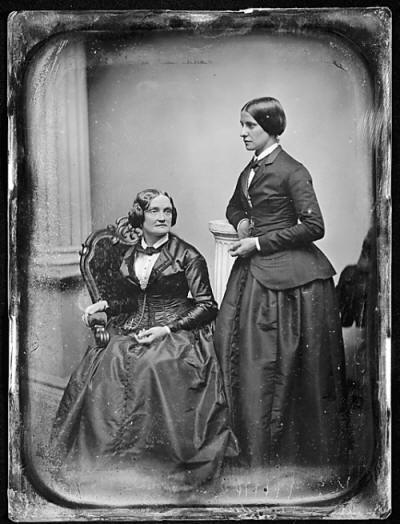
Cushman and Hays
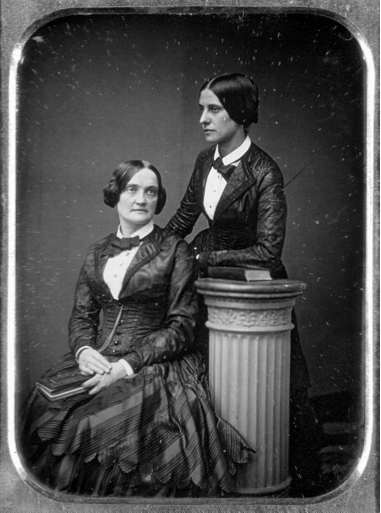
Cushman and Hays
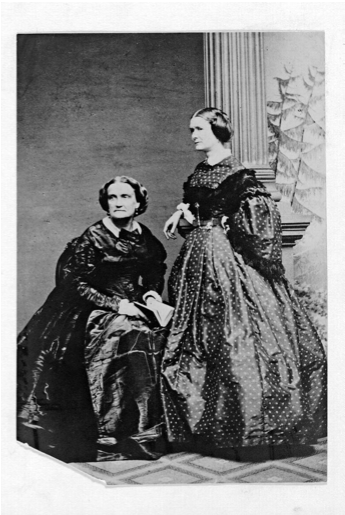
Cushman and Stebbins
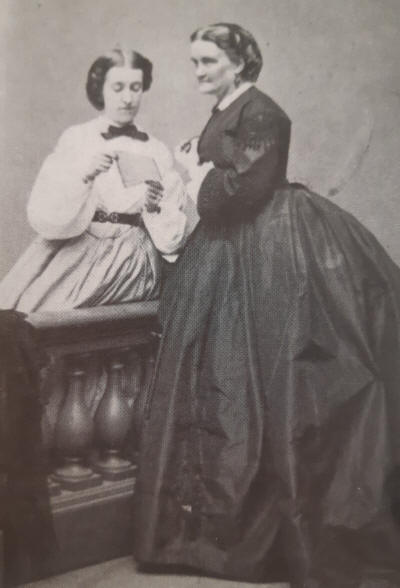
Emma Crow and Charlotte Cushman
Mount Auburn Cemetery
Charlotte Cushman Club, Locus Street, Philadelphia
Charlotte Cushman Club, Camac Street, Philadelphia
When Mary Ann Paton, Mrs. Joseph Wood, visited Boston in 1834, Capt. Mackay introduced Cushman, who sang with her in two of her concerts. Through Mrs. Wood's influence she became a pupil of James G. Maeder, a ladies' musical director, and under his instruction made her first appearance in opera in the Tremont Theatre as the Countess Almaviva in ''The Marriage of Figaro'', with great success, and her second as Lucy Bertram in ''Guy Mannering''. She went with his company to New Orleans, where her voice, which had been strained by the soprano parts assigned to her, suddenly failed. Seeking the counsel of James H. Caldwell, manager of the principal theatre of New Orleans, she was advised by him and by Barton, the tragedian, to become an actress and was given the part of Lady Macbeth to study. She made her dramatic debut in it, with complete success, in 1835.[2]
Cushman made her initial professional appearance at age eighteen on April 8, 1835 at Boston's Tremont Theatre.[3] She then went to New Orleans where she performed successfully for one season, after which she returned to New York City to act under contract with the Bowery Theatre. She scored rave reviews in Albany, New York for her portrayal of Lady Macbeth.[4]
By 1839, her younger sister Susan Webb Cushman became an actress, and at the age of 14 had married Nelson Merriman. Her husband abandoned her when she was pregnant and Charlotte cared for her sister. The two sisters became famous for playing ''Romeo and Juliet'' together, with Charlotte playing Romeo and Susan playing Juliet.[5]
In 1843, Cushman became involved romantically with Rosalie Sully, a daughter of artist Thomas Sully. By 1844, the romance had ended. She began traveling abroad, acting in theater, and Sully died shortly thereafter, in 1847. She was also very close to the writer Anne Hampton Brewster around 1844 but social pressure from Brewster's brother meant that they had to part. Brewster reminisced about their idyllic time together in letters in 1849.[6] She eventually left a portrait of Cushman by Thomas Sully as a bequest to the Library of Philadelphia.[7]
While in London Cushman met poet Eliza Cook, who wrote poems for her, praising her acting and declaring undying love. In the 1840s Cook published a fervent poem, “To Charlotte Cushman,” which described the two women as “captive in Affection’s thrall." But Cushman never remained faithful to just one woman and she was also interested in an 18 year old music teacher named Sarah Anderton.
She made England her home for several years, becoming friends with the author Geraldine Jewsbury, who is said to have based a character on Cushman in her 1848 novel ''The Half Sisters''. There is a one-woman play about her titled, "The Last Reading of Charlotte Cushman" written by Carolyn Gage.
In 1848, Cushman met journalist, writer and part-time actress Matilda Hays. The two women became close friends, and after a short amount of time and some correspondence, they became involved in an affair. For the next ten years the two would be together almost constantly. They became known for dressing alike, and in Europe were publicly known as ''a couple''.
In 1849, Cushman returned to the United States and by 1852 had decided to retire from the stage. On a tour of United States theaters in 1849, Cushman traveled with Hays, and a newspaper article praising Cushman as a “woman . . . worthy of homage and esteem” added, “Miss Cushman will be accompanied by her friend, novelist and translator, Matilda M. Hays.”
When Hays published her translation of George Sand’s La Petite Fadette in 1851, she dedicated it to Charlotte Cushman. She took up residence with Hays in Rome, Italy. They began living in an American expatriate community there, made up mostly of the many lesbian artists and sculptors of the time. Cushman used her notoriety to promote the works of African American/Native American sculptor Edmonia Lewis, who had become a close friend and whom Cushman greatly admired.
Elizabeth Barrett Browning wrote to her sister Arabel in 1852 about meeting Matilda Hays and Charlotte Cushman: “I understand that she & Miss Hayes [sic] have made vows of celibacy & of eternal attachment to each other— they live together, dress alike . . . it is a female marriage. I happened to say, ‘Well, I never heard of such a thing before.’ ‘Haven’t you?’ said Mrs Corkrane [sic], . . . ‘oh, it is by no means uncommon.’ They are on their way to Rome, so I dare say we shall see a good deal of them. Though an actress . . . Miss Cushman has an unimpeachable character.” Barrett Browning’s informant was the wife of journalist John Frazer Corkran, a correspondent for the Morning Chronicle.
On November 12, 1852, Harriet Hosmer arrived in Rome, accompanied by her father, Dr. Hiram Hosmer; Sarah Jane Clarke Lippincott, the journalist known professionally as Grace Greenwood; Virginia Vaughn, a girlhood friend from Lenox; Charlotte Cushman; Sallie Mercer, Cushman’s African-American maid and “right-hand woman”; and Matilda Hays, Cushman’s partner, a feminist reformer and translator of George Sand’s novels. The socially well-connected Vaughn had introduced Hosmer to Cushman in 1850 after a performance in Boston. Hosmer was immediately taken with this strikingly independent woman and developed a lifelong attachment to her. In a letter to her childhood friend Cornelia Crow Carr, she wrote: “Miss Cushman and Miss Hays (her friend and companion) have left Boston, and I can’t tell you how lonely I feel. I saw a great deal of them during the three weeks that they were in the city.... Isn’t it strange how we meet people in this world and become attached to them in so short a time?” Cushman and Hays represented models of creative freedom for Hosmer, who shared their residence at via del Corso 28 in Rome.
Cushman was fiercely protective of her young female charges in Rome and quickly made enemies with the influential American sculptor William Wetmore Story. Writing to his friend the poet James Russell Lowell shortly after the women’s arrival in Rome in 1853, Story described the “furore at 28 Corso,” with its “harem (scarem) as I call it... [of] emancipated females who dwell there in heavenly unity; namely, the Cushman, Grace Greenwood, Hosmer,” and others.
In 1854, Hays left Cushman for sculptor Harriet Hosmer, which launched a series of jealous interactions among the three women. Hays eventually returned to live with Cushman, but the tensions between her and Cushman would never be repaired.
In Rome Hosmer frequented a group of artists including Anne Whitney, Emma Stebbins, Edmonia Lewis, Louisa Lander, Margaret Foley, Florence Freeman, Sara Jane Clarke, Kate Field, and Vinnie Ream.[8] Nathaniel Hawthorne was clearly describing these in his novel ''The Marble Faun'', and Henry James called them a "sisterhood of American ‘lady sculptors'."[9]
Charlotte Cushman and Emma Stebbins built a life together in Rome, using the trope of domesticity to emulate the heterosexual nuclear family. In March of 1857, they traveled to Naples, a sojourn that cemented their romantic attachment. At the time, Cushman was still involved with Matilda Hays. In April, Hays fled Rome after an emotional confrontation with Cushman. By July, Stebbins and Cushman had formalized what would become a lifelong partnership. “The current of [our] two lives ran, with rare exceptions, side by side,” Stebbins would later write. “We were in Rome, as ‘travellers and pilgrims’ to the famous city.” Although theirs was not an untroubled relationship, they exchanged vows of love and fidelity in 1859. Cushman described their relationship as a marriage: “Do you not know,” she wrote to Wayman Crow, “that I am already married and wear the badge upon the finger of my left hand?”
By late 1857, Cushman was secretly involved with sculptor Emma Stebbins. One night while Cushman was writing a note, Hays walked in on her. Suspecting that the note was to Stebbins, Hays demanded to see it. Although Cushman maintained that the note was not to Stebbins, she refused to show it to Hays. The altercation that followed was explosive. Hays became enraged and began chasing Cushman around the house, pounding her with her fists at every opportunity. The relationship ended immediately and Hays moved out. She then sued Cushman, stating in her claim that she had sacrificed her own career to support Cushman's career and therefore was due a certain payment. Cushman paid her an unknown sum and the two women parted company forever.
Hosmer had once called Stebbins "wife". But it was with Cushman that Stebbins shared rooms when they moved to Via Gregoriana, 38, in November, 1858. Hosmer became "single", living separately at the same address for several years. But soon Cushman and the headstrong Hosmer were at odds. Hosmer moved accross the Piazza Barberini and next door to artist William Wetmore Story. Eventually their resentments faded, but they never regained their closeness.
Charlotte Cushman held her first reception in her new home in January of 1859, beginning a tradition that would continue for many years. Mingling at this festive event were the feminist art historian Anna Jameson, Fanny Kemble, Adelaide Sartoris, and the British author and reformer Mary Howitt, to name just a few. When the Irish feminist Frances Power Cobbe came to town, she noted: There was a brightness, freedom and joyousness among these gifted Americans, which was quite delightful to me. Cushman had the gift of drawing out the best from all who came, explained Emma Crow, the youngest daughter of the philanthropist Wayman Crow.
Emma Stebbins moved in with Cushman shortly after the break-up with Hays. Cushman traveled to America for a short tour a couple of months later. Although Cushman maintained that she was devoted to Stebbins, she became involved with another woman not long after her relationship with Stebbins began. Cushman met an 18-year-old actress, Emma Crow, the daughter of Wayman Crow, and fell for her. The two women began an affair, and Cushman often called her "my little lover". Cushman began a clandestine relationship with the much younger Crow in 1858, soon after she exchanged rings with Emma Stebbins and began living with her. Cushman met Crow while touring the United States; their affair lasted years, spanned continents, and is documented in Cushman’s many letters to Crow, which Crow preserved and bequeathed to the Library of Congress, despite her lover’s many anxious requests that she burn them. In that correspondence, Cushman frequently tried to naturalize her adulterous betrayal of Emma Stebbins by calling the younger Emma Crow her daughter, niece, and baby, as if to suggest that Crow was not Stebbins’s rival but simply an addition to the family. “Never did a mother love her child so dearly. Never did Auntie think so sweetly so yearningly of her Niece. Never did Ladie love her lover so intensely,” Cushman wrote.
In the 1860s, Henry Wreford promoted a movement of women artists in Rome known as the 12 Star Constellation amongst whom were Charlotte Cushman, Margaret Foley, Harriet Hosmer, Edmonia Lewis, Emma Stebbins. Henry Wreford was a figure of curiosity for historians and literary experts of the time but remained relatively unknown to the wider public despite his substantial role within the political world of pre-unified Italy and his promotion of the culture of gender.
American women sculptors’ relationship with the colonialist discourse in Italy was fraught with such contradictions. Nonetheless, Frances Power Cobbe, who lived at the Charlotte Cushman domicile in the early 1860s, promoted the notion of Rome as a utopia. Italy seemed “the favorite land of gifted Americans,” she exclaimed. “American women, in particular, seem to find it a congenial sphere for the development of the more marked individuality which characterizes them.”
Before her departure to Italy, Cushman offered a farewell performance at the Washington Theater in the title role of ''Hamlet''. The poster advertising her appearance describes her as "a lady universally acknowledged as the greatest living tragic actress".[8]
When Cushman returned to Italy, Crow followed. Not long after arriving in Italy, Crow attracted the attention of Cushman's nephew, Ned Cushman. In April 1861, Ned Cushman and Emma Crow married. Cushman took the incestuous fantasy of sex as kinship to its literal limits when she encouraged Crow to marry Cushman’s nephew and adopted son, Ned Cushman. Cushman’s plan was to have Crow live near her as her daughter-in-law, a situation to which Cushman’s wife, Emma Stebbins, could not object. Crow was so in love with Cushman that she agreed to the arrangement, and she and Cushman continued their affair well after Crow’s marriage to Ned made Charlotte Cushman young Emma’s mother-in-law and aunt to the children Emma had with Ned. After Crow married Ned Cushman, Charlotte continued to address Emma as her lover, but also as a “dear new daughter” who had, in taking the Cushman name, also become in some sense Cushman’s wife. Cushman called Emma’s marriage with Ned her own “ultimate entire union” with Emma, and her letters to a pregnant Emma convey a sense, as biographer Lisa Merrill puts it, “that she and her ‘little lover’ were having this baby together.” With a grandiosity that came easily to a rich and famous actress, Cushman arrogated to herself the roles of husband, wife, father, mother, aunt, and lover, saluting Emma as “Dearest and Sweetest daughter[,] niece, friend and lover” and referring to herself in other letters as “Big Mamma."
Henry James translated his acquaintance with Charlotte Cushman’s history into the heterosexual plot of The Golden Bowl, in which a father marries his daughter’s husband’s lover, also named Charlotte.
Cushman was friends with artists, writers and politicians; when she came to Washington, D.C. in the 1860s, she often stayed at the home of Secretary of State William Seward, with whom she was very close friends. In July 1861, Seward introduced her to President Lincoln, who told her that ''Macbeth'' was his favorite Shakespearean play and that he hoped someday to see her in the role of Lady Macbeth. In 1863 she again returned to the United States, appearing on several occasions for the benefit of the Sanitary Commission. Lincoln saw her perform in ''Macbeth'' in October at Grover's Theatre with his family. During the last six years of her life Cushman developed a remarkable ability as a dramatic reader, giving scenes from Shakespeare, ballad poetry, dialect poems and humorous pieces with a success not less decided than her earlier dramatic triumphs. In 1871, after a residence in Europe, she resumed her career in the United States as a reader, besides fulfilling several dramatic engagements.
Her farewell appearance was announced at least seven times in as many different years. Her final performance in New York was at Booth's theatre, where she played the part of Lady Macbeth. She took a similar demonstrative farewell in the same character in Philadelphia and other cities and her career closed in Boston, at the Globe Theatre, on 15 May 1875. After a reading tour to Rochester, Buffalo, and Syracuse, she retired with a large fortune to her villa at Newport, where she was seized with her final illness. In October she went to Boston and placed herself under medical treatment.
In 1869, Cushman underwent treatment for breast cancer. Stebbins ignored her own sculpting career and devoted all of her time to caring for Cushman.[9]
Charlotte Cushman died of pneumonia in her hotel room on the third floor at the Omni Parker House Hotel in Boston in 1876, aged 59, and was interred in Mount Auburn Cemetery in Cambridge, Massachusetts.[10]
After Cushman’s death, Emma Stebbins wrote a biography of her former spouse that made only one direct statement about their relationship: “It was in the winter of 1856– 57 that the compiler of these memoirs first made Miss Cushman’s acquaintance, and from that time the current of their two lives ran, with rare exceptions, side by side.” But Stebbins attested to her marital connection with Cushman through the very act of writing the biography as a memoir, in her pointed exclusion of Cushman’s other lovers from her account, in her detailed description of their shared apartment in Rome, and in a ten-page inventory of their pets, including dogs named Teddy and Bushie. One of the women’s many pets became the subject of a eulogy by Isa Blagden, a writer who lived in Florence and was close to Stebbins and Cushman, for whom she composed “To Dear Old Bushie. From One Who Loved Her,” cited in full in Stebbins’s biography. In its emphasis on the true devotion of a passionate love that remains tacit, the poem signals Blagden’s genuine affection for Bushie and her appreciation for the “lifelong love” between the two women with whom the dog lived.
In 1915 she was elected to the Hall of Fame for Great Americans.[11]
In 1907, the Charlotte Cushman Club was founded and named in her honor. In 2000, it became the Charlotte Cushman Foundation.
Her Charlestown home is a site on the Boston Women's Heritage Trail.[12]
Samuel Barber (1910-1987), Horatio Alger (1832-1899), Charlotte Cushman (1816-1876) and Bill Sherwood (1952-1990), all descend from the same Pilgrims, Degory Priest (arrived with the Mayflower), Isaac Allerton and his wife Mary Morris (arrived with the Mayflower), and Robert Cushman.

Tony
Scupham-Bilton - Mayflower 400 Queer Bloodlines
My published books: